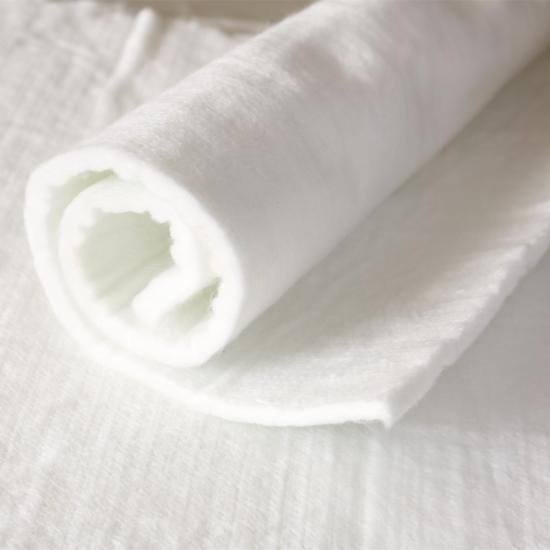- infor1@fiberglassyn.com
- +86-13933702587

When it comes to choosing the right insulation material, we often face a number of challenges. The choice of insulation materials not only affects a building’s energy efficiency and comfort, but can also have profound consequences for the environment and long-term economics. Therefore, choosing the best insulation material is crucial.
Among many thermal insulation materials, fiberglass needle felt has become one of the most popular high-quality thermal insulation materials due to its excellent performance and excellent characteristics.
In this article, we’ll take a closer look at why fiberglass needle felt is the best insulation material and the long-term benefits it brings.
As a high-quality thermal insulation material, fiberglass needle mat has excellent thermal insulation properties. Its unique structure and material properties enable it to effectively reduce heat conduction and loss, thereby maintaining indoor temperature stability. Compared with other common insulation materials, such as foam plastic or rock wool, fiberglass needle mat performs better in insulation, providing reliable insulation effects for buildings.
Fiberglass needle mat has the characteristics of high insulation and high corrosion resistance, allowing it to maintain good performance in various environmental conditions. Whether in high temperature, high humidity or highly corrosive environments, fiberglass needle mat can perform well, is not easily affected by external factors, and maintains long-term stability.
Compared with other insulation materials, fiberglass needle mat has the advantages of being light, soft and low in moisture absorption. This makes fiberglass needle mat more convenient during the construction process, and construction workers can easily cut, shape and install it without adding extra burden. At the same time, its low hygroscopicity also ensures its stability in humid environments and is not easily affected by moisture.
Construction of glass fiber needle mat is relatively simple and does not require complex tools or techniques. In addition, fiberglass needle mat has good recovery properties. Even if it is squeezed or deformed, it can quickly return to its original shape and maintain its stable thermal insulation effect.
Fiberglass needle mat is known for its excellent durability and long-term benefits. After long-term use and exposure to different environmental conditions, fiberglass needle mat can still maintain its stable performance, providing long-lasting insulation for buildings.
The thermal insulation effect of insulation needle mat is mainly based on its material properties and structure. Glass fiber is a fibrous material drawn by melting glass raw materials at high temperatures. It has an extremely low thermal conductivity and can effectively block the conduction of heat. In the production process of needle mat, the fiberglass are interlaced and closely connected through the needle punching process to form an insulation layer with a stable structure and moderate porosity. This structure can not only reduce heat conduction, but also reduce air convection, effectively prevent heat loss, thereby improving the thermal insulation effect.
In addition, fiberglass needle mat also has good reflective properties. Its surface is smooth and flat, which can reflect most of the thermal radiation, reduce heat absorption, and further improve the thermal insulation effect. Taking the above factors into consideration, fiberglass needle mat can effectively insulate and prevent heat conduction and heat radiation during the thermal insulation process, providing a stable and long-lasting thermal insulation effect for buildings.
The thermal insulation effect of glass fiber needle mat has been widely verified and recognized in practical applications. Many buildings and engineering projects choose to use E glass Needle Mat as insulation material, achieving remarkable insulation effects.
Taking building insulation as an example, many residences, commercial buildings and industrial plants use fiberglass needle mat as the main insulation material. In winter, fiberglass needle-punched mat can effectively block the intrusion of outdoor cold air and keep the room warm and comfortable; while in summer, it can effectively block the conduction and radiation of outdoor heat and keep the room cool. Through actual measurement and monitoring, buildings using fiberglass needle mat have achieved significant results in energy conservation and emission reduction, and can significantly reduce energy consumption and greenhouse gas emissions.
In addition, fiberglass needle mat is also widely used in the insulation of industrial equipment and pipes. In the chemical, petroleum, electric power and other industries, industrial equipment and pipelines often require long-term stable working temperatures, and glass fiber needle mat can provide reliable insulation effects to ensure the normal operation of equipment and pipelines. Practical applications show that using glass fiber needle mat for industrial equipment and pipeline insulation can effectively reduce energy consumption, extend equipment life, and improve production efficiency.
Fiberglass insulation is popular for its excellent performance and durability. However, an accurate assessment of its service life requires consideration of several factors and will vary with different environmental conditions and usage patterns.
To sum up, it is common for fiberglass insulation materials to have a service life of about 20 to 30 years. However, the specific service life needs to be specifically evaluated based on its quality, usage environment and maintenance. By choosing high-quality fiberglass insulation materials, paying attention to the use environment, and performing regular maintenance, you can maximize its service life and provide long-lasting and reliable insulation for buildings.
A humid environment is one of the common challenges faced by many insulation materials, but fiberglass insulation materials have taken this into consideration during the design and application process, and taken corresponding measures to avoid moisture.
Fiberglass insulation inherently has low hygroscopicity, which is one of its key advantages in resisting moisture. Compared to other common insulation materials, such as foam or rock wool, fiberglass insulation is less hygroscopic and less susceptible to humid environments. This means that in humid climate conditions, fiberglass insulation materials can maintain stable performance and will not reduce the insulation effect due to moisture absorption.
Some measures can also be taken during the installation and use of fiberglass insulation to further avoid moisture. For example, during the installation process, you should ensure that the joints between the Needle mating Mat and the building structure are well sealed to prevent water vapor from penetrating into the insulation layer through the gaps. In addition, regular inspection and maintenance of the waterproof layer of building exterior walls and roofs, and timely repair of leaking points are also one of the important measures to prevent fiberglass insulation materials from getting damp.
Based on the above, fiberglass needle mat has many advantages as the best thermal insulation material. These advantages make fiberglass needle mat one of the first choices in the field of building insulation. It is widely used in residential buildings, commercial buildings, industrial equipment and other fields. Provide stable and reliable thermal insulation protection for buildings.
In the future, with the continuous advancement of science and technology and people’s increasing emphasis on environmental protection and energy conservation, glass fiber needle mat will continue to develop and grow as an insulation material. In addition, with the intensification of global climate change and the increasingly prominent issue of greenhouse gas emissions, building energy conservation and carbon emission reduction have become hot topics of concern to all sectors of society. As a key technology that can effectively reduce building energy consumption and carbon emissions, glass fiber needle mat will play a more important role in the field of building energy conservation in the future and become an important force in promoting the sustainable development of the construction industry.

If you have any questions
Please contact us for free consultation and product quotation
Table of Contents Add a header to begin generating the table of contents Introduce Concrete is the backbone of construction—but its inherent brittleness, vulnerability to
Table of Contents Add a header to begin generating the table of contents Introduce A roof is more than just a top layer of a
You can leave your needs and contact information~and We can provide you with usage suggestions + product suitability analysis + free sample delivery!
Leave us your interest and contact information, and we’ll send you detailed information for your reference!
You can leave the specifications and contact information you need~ Our technicians will immediately organize the exclusive information for you and send it to your email!
You can leave your contact information here, and we will send you detailed specifications and application cases to make your purchase clearer~